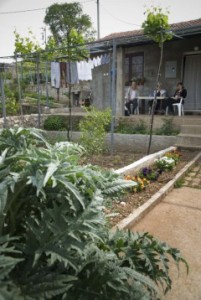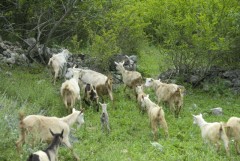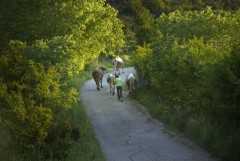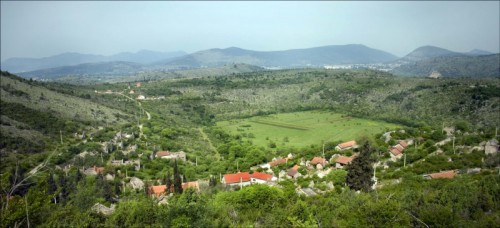Spring in the Ruined Village
Illustrated story, May 2009
Remaking its old cloak, nature has done its best here again this spring, but the people – especially the Bosnia-Herzegovina authorities, from local through cantonal to the federal level -- have done next to nothing for the renovation of the village.
|
Here in the south the spring has spread its most powerfully beauty wings. However, after almost one and a half centuries, mother nature's magnificent floral attire is not wide enough to cover and hide the most recent war scars on the wounds of this once large and lively village. The village has greeted yet another spring with its wide-open doors, windows… and roofs. Compared to the number of skeletons of former houses, there are not many red roofs to show. Empty houses stand out as silent witnesses of the atrocities committed against the village's residents. Like a thorn in one’s side, they silently and sadly remind us – we are not quite sure whether as a warning of human weakness, or as a demonstration of the fateful absence of every kind of compassion – of the indifference of the authorities, from the local to the federal level, to help their citizens rebuild decent roofs above their heads. |
|
|
There is an old Orthodox cemetery on the vast Kravarica plateau. The felled monuments and the figures of the blessed inhabitants, killed and afterwards memorialized in granite, bear witness to madness as well as to a pestilence responsible for the deaths of a great number of people. Near the cemetery, there once rose a church. In its crypt the remains of more than 4,000 Serbs from south Herzegovina perfidiously killed in the WWII were buried. Both the local cemetery and the church, today in ruins, wordlessly speak more about the living than about the dead. |
|
|
For years and years, some twenty of the several hundred inhabitants of this village, living abroad as refugees, have been expecting to receive some donations to enable them to return to their destroyed ancestral homes and their estates overgrown with weeds. If there had been - and if there would be - more will and understanding, the village could have looked much more different. The camera's incorruptible eye, looking at Kravarica from Bijela Vlaka over the Bulut quarter, as well as the Dragic quarter viewed from Grabak, reveals the village and indicates its true appearance. It is hoped that the return of refugees will be facilitated by KM90,000 allotted to the village by the B-H Ministry of Human Rights and Refugees for installment of a sewerage and water system.
|
|
|
The Cultural Center has been renovated thanks to the "Prebilovci" Serbian national organization founded in Belgrade three years ago. This certainly represents an important impetus for the return and gathering of its residents. The Cultural Center building used to be the "King Milutin" elementary school, built in 1924 by old inhabitants of Prebilovci, who invested their own labor and funds. After the WWII it became the Cultural Center where the "Dusan Bulut-Lolo" cultural and art club performed. In addition to some houses renovated earlier or, more rarely, some newly built ones, such as the one on the photo on the right, the renovation of the Cultural Center has completely changed the picture and instilled hope for a better life for the village and its inhabitants. |
|
|
At sundown, following the tradition of neighborliness ("the inhabitants of Prebilovci have always got along very well"), neighbors gather to chat about the events of the day and all sorts of life topics, over a cup of coffee and a glass of brandy. But they also ask each other, with bitterness: Where are our other family members? When will our neighborhood start to grow? |
|
At first glance, as it once used to be; goats grazing around the village and cows returning from the watering hole. Way back when village life flourished, when everything bore fruit and easily multiplied of itself, there were thousands of cattle, sheep, goats, pigs and horses. |
|
|
In contrast to the vast Kravirice plateau, the central settlement, situated at the hillsides of Bijela Vlaka and Gabak, is situated in a natural amphitheatre. All the beauty of the village is highlighted in this panorama snapshot taken by an excellent photographer. Looking at the photo, the young will, as before, find an appropriate location for a soccer field shaped well by nature in the big Dol below the village. The adults will remember the first-class tobacco once grown here and how every inch of the soil was tilled. The more realistic visualize medicinal herb plantations in Dol and the terraced orchards surrounding it, as well as the rich vineyards in Kravarica where the famous ”zilavka” wine is produced. This is favored soil for the growing of Mediterranean fruit and healthy food. One should but think – when time comes – of picking various medicinal herbs and converting them into cash. Old inhabitants of Prebilovci knew about that gift of nature – that this area is multifarious from early spring to late autumn. There are two toponymes If only the houses had been renovated and life in them revived, this and many a thing would have become reality. But, ”the empty hand of a dead friend,” is the villagers' comment on the realization of some of their wishes. "We can be risen from the ruins," they say, "only with the help of international foundations, like the American one that has supplied the village with electricity and laid a foundation for us to revive and start a new life."
|
|
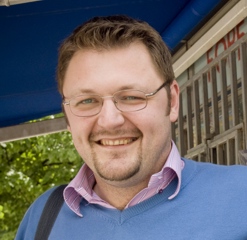
-"Unfortunately, the saying 'The empty hand of a dead friend,' is the only thing that one can think of when looking at Prebilovci, being aware of the number of returnees, and of the dreadful fate which Prebilovci and its inhabitants, as well as other Serbs from southern Herzegovina, have experienced in the past 60-70 years," says Sinisа Nаdаzdin, president of the ”Prebilovci” organization. "However," Nаdаzdin goes on to say, "what cannot be captured at a glance are the dignity, perseverance, determination, and power as steady as Prebilovci rock, as well as the unextinguished and indestructible faith in the renovation of the village."
Preserving the authenticity of life of a southern-Herzegovina village, Prebilovci is today an unpolished diamond seeking nothing more than sufficient hands and funds to enable the return of life to the village, to exploit its potential and show its full beauty to the world. One step in that direction is the foundation of the "Prebilovci" organization. The aim of this organization is to gather all of the potential possessed by inhabitants and friends of Prebilovci and to use them for rebuilding the village. People from the organization believe there is enough potential to raise the village from the ruins. We'd really like to share this mission and our wish with the world and all people of good-will, especially with humanitarian organizations, to enable them to convince themselves of the beauty of Prebilovci and its economic and touristic potential.
The ”Prebilovci” organization will certainly try its hardest to reach the best final result in the renovation of the village. In keeping with this goal, the organization has already made firm plans for concrete activities which will bring back smiles, joy, happiness, prosperity and a contented life to the inhabitants of Prebilovci. Our wish is that none of the Prebilovci potential be neglected, but, on the contrary, completely used. Taking all this into consideration, the organization will vigorously do its best to reach these goals, generously supporting the well-being of Prebilovci and its inhabitants.
This is how the incorruptible eye of a camera and the web-team saw Prebilovci in May 2009. We invite you, dear readers of this report and especially inhabitants of Prebilovci, to let us know how you view the renovation of the village, what you would propose.
The photos were taken by Olof Neslund in May 2009.
This article has been put together by Mladen Bulut, Aco Dragicevic, Sasa Vazic and Darko Drakulic.
Published in the Prebilovci village website in June 2009.

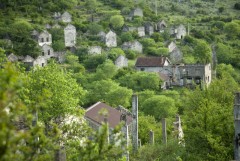
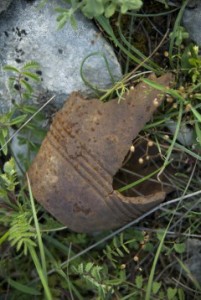
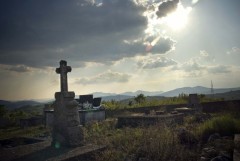
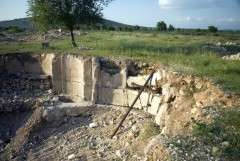
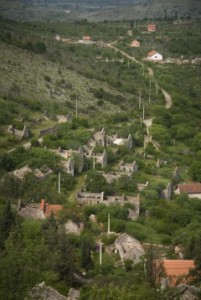
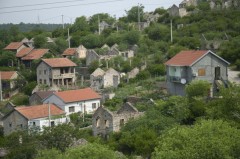
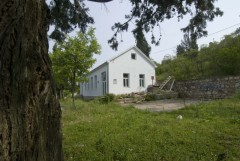
_1.jpg)
